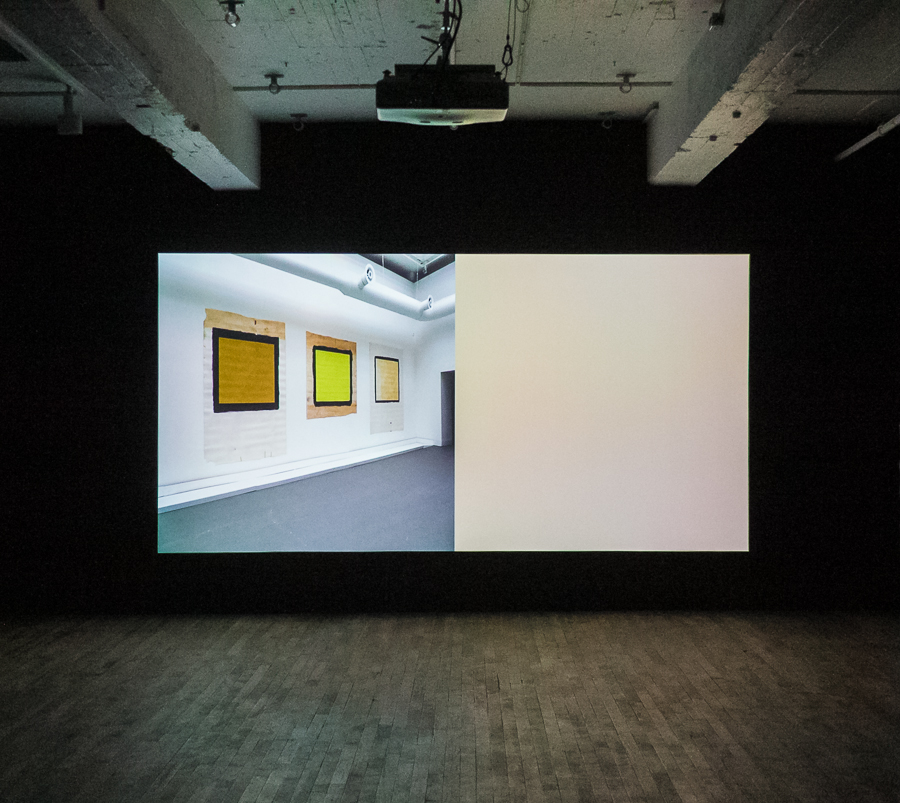Through his abstract multimedia and photographic works, David Tomas underlines the fact that photographs represent a subjective view of history. In his “Projections,” the photographer focuses on the subjectivity of history, and the influence of both the writer and the interpreter of the story. His images and their staging are a way for the artist to give the viewer that power of interpretation, while at the same time guiding people toward certain details. In that way, Tomas points out the parts of history that don’t make it into the textbooks: mundane-but-informative scenes such as an astronaut suiting up for launch, or a woman working in a doll factory.
A photograph can seem like the most accurate representation of an event, as it displays an exact, static 2D representation of a 3D event, but here Tomas emphasizes how photos actually represent the viewpoint of the person behind the camera. Each image in the exhibit is projected on a small individual screen: some are photographs, some are looping bits of film, like animated GIFs. The images zoom in and out, focusing on different details, some of which he’s manipulated himself, like miniscule printed words (“time,” “eternity,” “freedom”) that appear one after the other on the sleeve of a man working in a garage. By manipulating the photos in such a way, but offering little in the way of verbal explanation, Tomas ensures the only concrete meaning found in his works exists in the mind of the viewer, and that he’s the one steering their interpretation.
As a consequence, the personal knowledge, experience, and worldview of the viewer become central to the exhibit. It is a bit hard to judge how important some of the images are to a larger statement about history. One of the projections shows trees passing on both sides of an empty road, as if you were looking through the back window of the car as you left the countryside. No sound, no action, just the continuous backward movement of the camera, reflecting the passing of time. It evoked the feeling of something slowly coming to an end, a moment of transition. It can be seen as recalling the importance of history as a proof of the passing of time, the proof that no matter what has happened, time will keep elapsing and therefore history will keep on being made.
The layout of the projections is spaced-out and geometric, reflecting a feeling of emptiness and serenity as soon as you enter the dark room. Each of the four projectors stands out on its own, partly due to the impact of the white light they emit in the obscure environment, and to the movement of the photos in different directions. Tomas uses a lot of grandiose language: in the reflective essay provided at the gallery’s entrance, he speaks of “the tensions between the possible and the impossible, the tangible and the intangible,” and the “possibility of meaning.” But without much explanation offered for the individual images, it’s hard to connect the actual work with those claims. Broad talk of the subjectivity of history and photographs rings a bit hollow when it seems that Tomas is largely focused on a very personal type of history. There’s plenty to say on the subject of history excluded from the mainstream record: the power and privilege of those who create that record, the marginalized voices they ignore, the oppression a subjective view of the past can create in the present. But Tomas’ tightly focused scope doesn’t allow for much exploration.
“David Tomas, Projections 2006-2011” will be running until December 14 at OBORO, (4001 Berri, suite 301).

